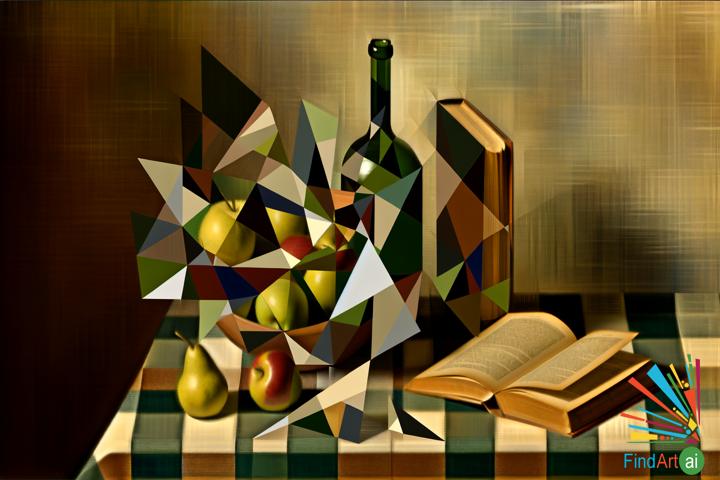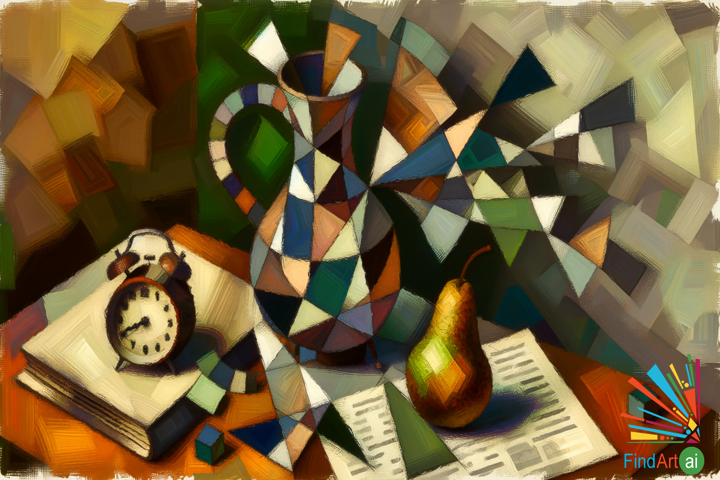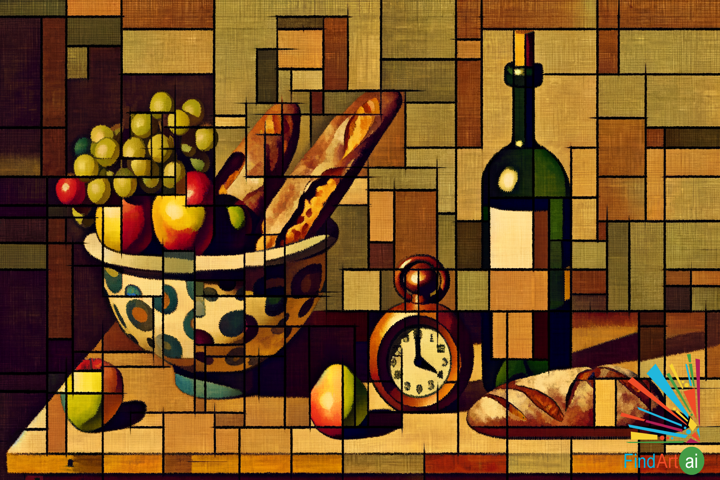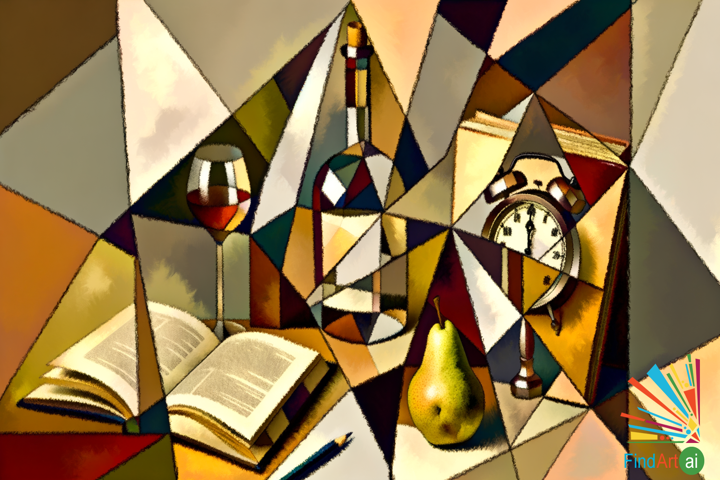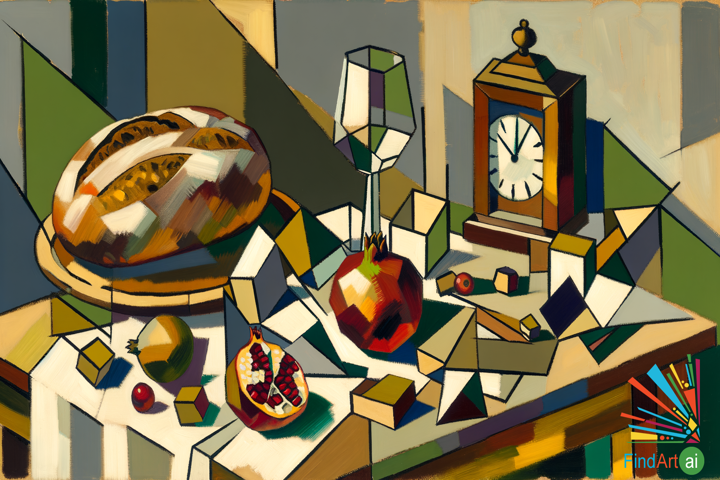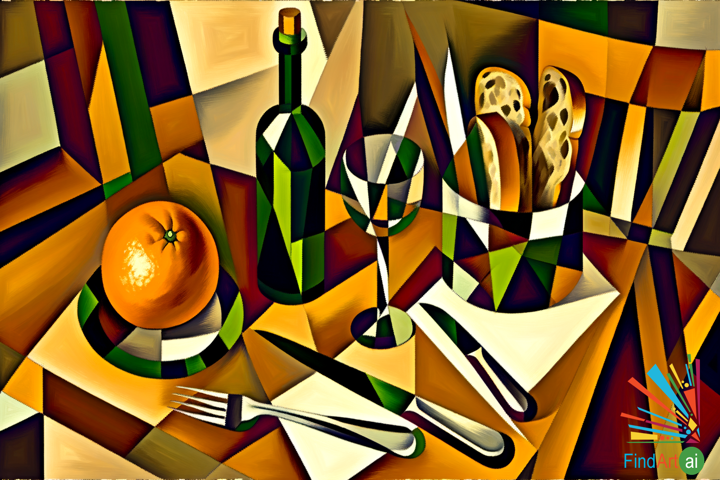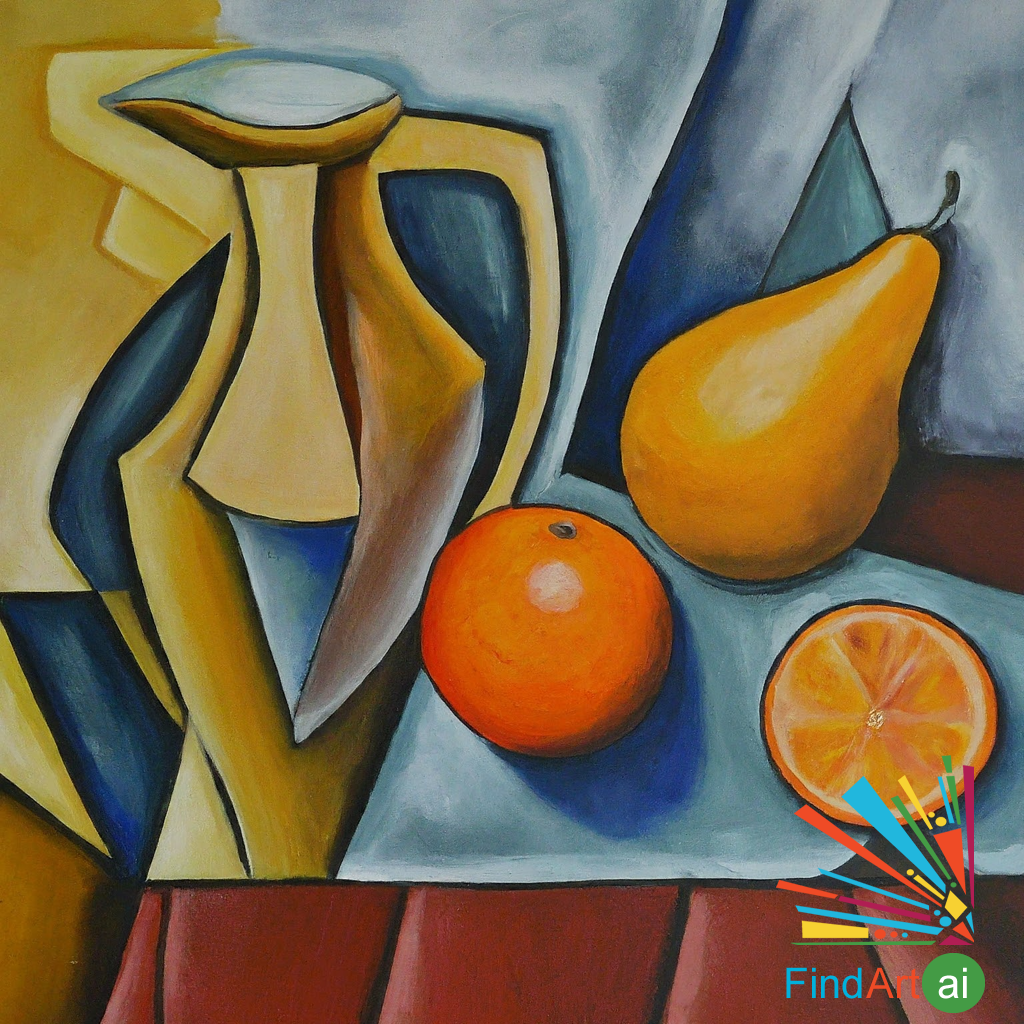
Cubism Paintings with Still Life Theme
Cubism paintings with a Still Life theme revolutionize the traditional approach to representing objects by breaking them down into geometric shapes, multiple viewpoints, and fragmented forms. Instead of capturing a single, fixed perspective, Cubist artists analyze the subject from various angles, rearranging these fragments into an abstract, flattened composition. This modern approach to still life challenges the boundaries of representation, emphasizing structure, form, and space over realism.
Key Characteristics of Cubist Still Life Paintings
- Fragmentation of Form
- Objects in a Cubist still life are broken into geometric shapes—cylinders, cubes, cones, or prisms. The subjects (such as bottles, fruits, musical instruments, or vases) are deconstructed into parts and reassembled in a way that shows different angles simultaneously.
- Multiple Perspectives
- Rather than depicting objects from one fixed viewpoint, Cubist artists present multiple angles at once. This challenges the viewer to experience the subject in a more dynamic, complex way, reflecting how we perceive the world in motion and over time.
- Flattened Space
- Cubist still life compositions often flatten the pictorial space, eliminating traditional depth and perspective. This compression of space allows objects to overlap, intersect, and appear on the same plane, emphasizing the two-dimensional nature of the canvas.
- Limited Color Palette
- Many Cubist still life paintings, particularly in the early phases of Cubism (Analytical Cubism), use a muted, limited color palette—often earth tones like browns, grays, and ochres. This allows the viewer to focus more on the structure and geometry of the composition rather than on color.
- In later stages (Synthetic Cubism), artists introduced brighter colors and even incorporated elements like newspaper clippings or fabric into their still life compositions.
- Collage and Mixed Media
- In Synthetic Cubism, artists began using collage techniques in still life paintings, incorporating everyday materials like newspaper, wallpaper, or sheet music. This not only added texture but also blurred the boundaries between fine art and popular culture, expanding the concept of what could be considered art.
- Simplification and Abstraction
- Objects are simplified to their essential forms, often abstracted to the point where they are almost unrecognizable. The focus is on the interplay of shapes, lines, and planes rather than on representing the objects realistically.
- Dynamic and Static Elements
- Even though still life traditionally focuses on inanimate objects, Cubist still lifes convey a sense of movement through shifting perspectives and fragmented forms. The interplay of angular lines and overlapping shapes creates a rhythm and energy, despite the stationary nature of the objects.
Common Themes in Cubist Still Life
- Everyday Objects
- Cubist artists frequently depicted ordinary, everyday items—bottles, glasses, fruits, guitars, or newspapers. These objects were chosen for their simplicity, allowing the artist to focus on form and structure rather than narrative content.
- Example: Picasso’s Still Life with Chair Caning (1912), which includes a variety of materials and objects like a pipe, glass, and lemon, blending traditional painting with collage.
- Musical Instruments
- Musical instruments, especially guitars and violins, were common in Cubist still life paintings. The curving lines of these instruments provided an interesting contrast to the angular geometric forms used in Cubism.
- Example: Georges Braque’s Violin and Candlestick (1910), where the violin is broken into angular fragments, viewed from different perspectives and almost fused with its surroundings.
- Tabletop Scenes
- Tabletop arrangements of objects like bottles, fruit, dishes, and glasses were frequently explored in Cubist still lifes. The arrangement often appears disjointed, with objects scattered across the surface, reimagined through multiple perspectives.
- Example: Juan Gris’ The Breakfast Table (1915), where bottles, cups, and plates are broken down into a complex arrangement of flat, geometric shapes.
Fragmented Feast: Explore Everyday Objects Reimagined Through a Cubist Lens
Fragmented Feast: A Cubist Still Life presents everyday objects like a wine bottle, fruit bowl, tabl...
Fragmented Harmony: A Cubist Exploration of Everyday Objects in Geometric Abstraction
Fragmented Harmony is a Cubist still life painting that deconstructs everyday objects into a tapestr...
Fragmented Harmony: A Dynamic Exploration of Cubism in Still Life Painting
"Fragmented Harmony: A Still Life in Cubism" presents a dynamic still life painting that embodies th...
Fragments of Time: Cubist Still Life Explores Time and Interconnectedness
"Fragments of Time: A Still Life in Cubism" reimagines everyday objects through a Cubist lens, break...
Fragmented Feast: A Cubist Journey Through Deconstructed Still Life and Geometric Forms
"Fragmented Feast" invites you to a Cubist exploration of still life, where everyday objects like a ...
Fractured Feast: Cubist Still Life Transforms Dining Objects into a Vibrant Tapestry
"Fractured Feast" invites you into a Cubist still life where everyday dining objects transform into ...

